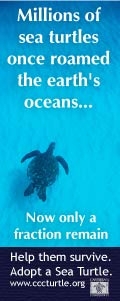Posted by Elena del Valle on February 27, 2020

Blood Lions poster – click to enlarge
Photos, video: Blood Lions
There may be as many as 12,000 lions in 350 breeding farms in South Africa living a desperately sad existence, according to Pippa Hankinson. She became appalled at the conditions of the captive lions in a remote breeding farm she visited in South Africa in 2011. After researching the subject at length and finding there were many similar farms she set out to share her discovery with the world. Four years later Blood Lions, an 84-minute feature documentary became available internationally. Scroll down to see a trailer.
“After over a year of intensive research, it was apparent that very few people were aware of the full extent of the industry – neither abroad nor in South Africa,” Hankinson, producer, Blood Lions, said by email when asked about the film*. “I felt strongly that the world needed to know, and decided that a film would be the most expedient way to create global awareness around what I saw as being complete exploitation.”
About the target audience for the film she said, “Widely speaking, the target audience for Blood Lions is the general public – particularly the youth – around the world. More specifically we aim to educate the travel industry i.e. tour operators sending clients to South Africa, as well as to empower tourists and young volunteers to encourage them to make responsible and ethical choices when visiting this country. And lastly we invite all those in positions of influence around the world to watch the film, and to help elicit policy change which will ensure the protection of all predators (and indeed all our wildlife) from cruelty, exploitation and commercial practices which are harmful and disrespectful, and which create ‘markets’ for the abusive and unethical use of our wildlife.”
The goal? “Blood Lions was produced to shine a light on the insidious practices of predator breeding and canned lion hunting in South Africa, as well as associated activities such as interactive tourism and the lion bone trade to SE (south east) Asia. Our aim was to reach as broad an international audience as possible in order to build global awareness and knowledge around the industry. It was – and still is – a ‘call to action,’ not only to effect behavioural change around how we treat our wildlife, but also to precipitate change in policy through garnering support from the world’s most influential individuals and organizations. Ultimately, we hope to see an end to captive predator breeding.”
When asked how easy filming was she said, “Our main challenge when filming Blood Lions was to appear as ‘amateur’ as possible, whilst at the same time securing HD (high definition) quality documentary video footage, so our filming/production approach was to be as low key as possible. This meant only one camera person – using highly mobile camera/audio equipment – who often posed as a tourist. A ‘spy camera’ was used to capture certain scenes where a conventional camera might have aroused suspicion. The use of a stills camera that was also able to shoot video, was also very useful in keeping a low profile. Another critical component of the film was the challenge of obtaining imagery from volunteers or staff who working on the captive lion breeding farms, who had the ability to get unique access to ‘behind the scenes’ animal and human behaviour. Suspicious predator breeding and hunting farm operators made life very difficult for us when they tipped off their colleagues that ‘greeny’ photo journalists were asking questions and capturing images on their properties. Some of the farms were therefore expecting us, and after a lot of threats, demanded that we leave the premises immediately we arrived. It was on these occasions that our hidden camera paid off. When we visited the hunting farm, our team posed as a private small film crew who were following an American client to make his own personalised African hunting safari video. This worked until such time that canned lion hunting operators once again became suspicious, and went so far as threatening to ‘kill us’ which forced our camera team to immediately leave their fenced hunting farm.”
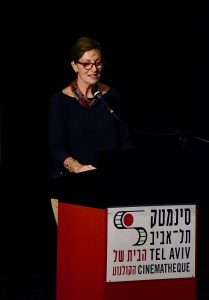
Pippa Hankinson, founder, Regulus Vision Pty Ltd
Many farm raised captive animals are hunted. When asked why she focused on lions the film producer said, “As you say, many farms raise captive animals to be hunted, but there is a ‘double-edged sword’ to the breeding of predators as they are not only bred to be hunted, but for their bones to be exported to supplement the ‘tiger bone trade’ in SE Asia. No other wild animals are hand-raised and bottle fed…simply for the bullet. Furthermore, most internationally recognised lion ecologists agree that the captive lion breeding industry has no conservation value whatsoever. Although captive hunting statistics have decreased, the demand for lion bones from Asia has increased dramatically over the last few years, leading to fears that this demand will inevitably put pressure on wild populations, as poaching increases and the illegal trade and trafficking intensifies.
Although my passion for wildlife extends to all animals, it seemed incomprehensible to me that these magnificent, iconic predators should be exploited in such a way. Lions are a keystone species at the top of the food chain, and they play a critical role in our ecosystem. There is no doubt in my mind that they are wild creatures, and that all wild species should be allowed to live out their lives in their natural habitat, and not forced into captivity to be mass bred for commercial purposes. To lion breeders in South Africa they are seen simply as commodities to be used to generate a lucrative income through interactive tourism and volunteering, trophy hunting and the sale of their body parts. It is now estimated that there are between 8,000 and 12,000 predators currently being held captive in over 350 breeding facilities across South Africa… very similar to ‘puppy mills’ in the USA. They lead heartbreaking lives and the cycle never ends.
Lion cubs born in captivity in South Africa are removed from their mothers within the first week of birth, and are passed off as ‘orphans’ or ‘rescues’. This practice of removing the cubs forces the females into intensive breeding cycles where lionesses produce up to five times more litters of cubs than they would in the wild. These tiny cubs are bottle fed, petted and hand-reared by paying tourists and volunteers who are led to believe that they are supporting authentic conservation projects which will rehabilitate these predators back into the wild. Nothing could be further from the truth. When the cubs grow too old for ‘pay and play’ activities, many are moved to facilities that offer ‘walking with lions’ tourist attractions. These sub-adult lions are often sedated, and trained in the same way as circus animals, to climb trees and pose for ‘selfies’ with paying tourists: facebook.com/BloodLionsOfficial/videos/1039594396154923/
Once these lions are considered too dangerous to be in contact with humans, some are sent to canned (captive) hunting facilities where they are shot in confined enclosures by trophy hunters. Others are sold to zoos or traders as breeding stock for new facilities, or private collections around the world. Completing the cycle of exploitation, lions that are not used for the above purposes are euthanized or slaughtered for their body parts to be exported to Asia to supplement the ‘tiger bone trade.’ The skeletons are utilised for medicinal and aphrodisiacal purposes in the production of what is called ‘tiger wine’ and ‘tiger cake,’ and also for use in ‘tiger bone jewellery’: facebook.com/BloodLionsOfficial/videos/1062460323868330/. This trade is also extremely worrying from a welfare perspective, as animals shot for their trophies in canned hunts are required to be in a reasonably good condition, whereas lions bred for the bone trade are bred intensively with little or no consideration towards their health or welfare: facebook.com/BloodLionsOfficial/videos/1447633032017722/”
Eighteen months after her deeply disturbing visit to a South African lion breeding farm in 2011, Hankinson founded Regulus Vision Pty Ltd to produce Blood Lions. She remains actively involved in the Blood Lions Campaign launched after the film’s release, “in order to continue to create further global awareness around the exploitation of the captive lion breeding industry.” The Blood Lions team members are Bruce Young and Nick Chevallier, directors; Hankinson and Jeremy Nathan, producers; Ian Michler, special consultant and lead character; Wildlands and Andrew Venter, executive producers; Bruce Young, script; Nick Chevallier, camera; and Dave Cohen, editor.
In 2015, Blood Lions premiered at the Durban International Film Festival in South Africa. Engagements with MSNBC and Discovery International followed. The film has appeared in 180 countries and territories around the world. It was screened at 17 international film festivals and hosted by the Blood Lions team in 25 countries. In the United States Blood Lions is available online at the PBS shop, Amazon, Ecostreamz and the Wildlife Conservation Channel.
*Text edited for style, length and clarity.
Posted by Elena del Valle on February 17, 2020
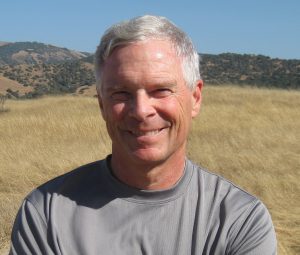
Gary Dudney, author, The Mindful Runner
Photo: Anna Deeb
A podcast interview with Gary Dudney, author, The Mindful Runner: Finding Your Inner Focus is available in the Podcast Section of Hispanic Marketing and Public Relations, HispanicMPR.com. During the podcast, he discusses running with Elena del Valle, host of the HispanicMPR.com podcast.
Gary is also the author of The Tao of Running: Your Journey to Mindful. Both were published by Meyer & Meyer Sports, one of Europe’s largest sports publishers. In his books he explores the mental side of running. He has contributed articles to Runner’s World, Running Times, Trailrunner, and Marathon & Beyond; and he has been a regular columnist for Ultrarunning magazine for over 10 years. He has completed over 70 one hundred mile trail races on his quest to run 100 one hundred mile runs, including at least one in every state. His home base is Monterey, California.
To listen to the interview, scroll down and click on the play button below or locate the “Podcast” section on the right hand side, then choose “HMPR Gary Dudney” or download the MP3 file to your iPod or MP3 player to listen on the go, in your car or at home from the RSS feed. Some software will not allow flash, which may be necessary for the podcast player. If that is your case, you will need to download the file to play it. To download it, click on the arrow of the recording you wish to copy and save it to disk. The podcast will remain listed in the February 2020 section of the podcast archive.
Posted by Elena del Valle on February 10, 2020
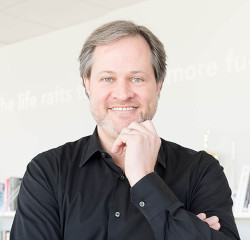
Calvin Carter, CEO, Bottle Rocket
Photo: Bottle Rocket
A podcast interview with Calvin Carter, CEO, Bottle Rocket is available in the Podcast Section of Hispanic Marketing and Public Relations, HispanicMPR.com. During the podcast, he discusses the disruptions caused by the connected consumer with Elena del Valle, host of the HispanicMPR.com podcast. The podcast was divided into two segments, part one and part two. This is part two.
Calvin established Bottle Rocket in 2008. He believes exceptionally innovative technology redefines our lives. He received the Ernst & Young Entrepreneur of the Year award in 2013. For the last twelve years, Calvin has pushed Bottle Rocket to become a renowned digital transformation company that connects future-focused brands and their customers through sophisticated yet simple experiences.
To listen to the interview, scroll down until you see “Podcast” on the right hand side, then select “HMPR Calvin Carter” and click on the play button below or download the MP3 file to your iPod or MP3 player to listen on the go, in your car or at home from the RSS feed. Some software will not allow flash, which may be necessary for the play button and podcast player. If that is your case, you will need to download the file to play it. To download it, click on the arrow of the recording you wish to copy and save it to disk. The podcast will remain listed in the February 2020 section of the podcast archive.
Posted by Elena del Valle on February 3, 2020

Calvin Carter, CEO, Bottle Rocket
Photo: Bottle Rocket
A podcast interview with Calvin Carter, CEO, Bottle Rocket is available in the Podcast Section of Hispanic Marketing and Public Relations, HispanicMPR.com. During the podcast, he discusses the disruptions caused by the connected consumer with Elena del Valle, host of the HispanicMPR.com podcast. The podcast was divided into two segments, part one and part two. This is part one.
Calvin established Bottle Rocket in 2008. He believes exceptionally innovative technology redefines our lives. He received the Ernst & Young Entrepreneur of the Year award in 2013. For the last twelve years, Calvin has pushed Bottle Rocket to become a renowned digital transformation company that connects future-focused brands and their customers through sophisticated yet simple experiences.
To listen to the interview, scroll down until you see “Podcast” on the right hand side, then select “HMPR Calvin Carter” and click on the play button below or download the MP3 file to your iPod or MP3 player to listen on the go, in your car or at home from the RSS feed. Some software will not allow flash, which may be necessary for the play button and podcast player. If that is your case, you will need to download the file to play it. To download it, click on the arrow of the recording you wish to copy and save it to disk. The podcast will remain listed in the February 2020 section of the podcast archive.
Posted by Elena del Valle on January 30, 2020

Ordinary Girls
Photos: Maria Esquinca
In Ordinary Girls A Memoir (Algonquin Books of Chapel Hill, $26.95), Jaquira Diaz describes the struggles she suffered growing up in a mixed race family first in Puerto Rico and then Florida. The 321-page hardcover non fiction book was published in 2019. Before finding success as a writer the neglected daughter of a drug addicted schizophrenic mother and absent father was a self described juvenile delinquent who was repeatedly arrested, and a drug abusing high school dropout.
Her fluid writing and storytelling belie dark gritty memories of maternal child abuse, deep sibling rivalry with her older brother, rape (references to violence remain off screen), suicidal tendencies and rage. Spanish words are peppered liberally as she paints a vivid image of her life and her childhood friends.
The book is divided into four main sections: Made Patria, Monstruo, Familia and Regresando. It includes bits about the history of the island and the failed efforts of some Puerto Ricans for independence from the United States.

Jaquira Diaz, author, Ordinary Girls
Questions submitted twice by email to her publishing company, by email and via Twitter to the author received no reply by the publication date for this article. Diaz received two Pushcart Prizes, an Elizabeth George Foundation grant, and fellowships from the MacDowell Colony, the Kenyon Review and the Wisconsin Institute for Creative Writing.

Click to buy Ordinary Girls
Posted by Elena del Valle on January 22, 2020

Mapping Out Marketing
Photos: Routledge Taylor & Francis Group
Ronald Hill, Ph.D. and Cait Lamberton dedicated two years to editing Mapping Out Marketing Navigation Lessons From The Ivory Trenches (Routledge,$39.95), a book targeting marketing students and marketing practitioners. The 193-page softcover book co-edited with Jennifer Swartz, a graduate student, features 55 entries (23 men and 22 women) from multiple academics. Submissions were limited to 500 words each as was the introduction. Proceeds from the book were earmarked for scholarships for underrepresented doctoral students.
“The American Marketing Association played a significant role in helping us find a publisher for our work,” Hill said by email (when approached by email Lamberton referred questions to Hill). “That is an important step that required putting their reputation on the line for our idea.”
When asked what prompted them to search this topic now Hill said “There is so much accumulated wisdom among marketing professors from around the world that does not get to folks interested in marketing practice. Most the self-help books have one good idea that they expand into an entire book. Why not have a book with many such ideas that cover a vast terrain!
Why not now? This wisdom is as necessary today as it ever will be. Let marketing professionals learn what we have to say and use what is most relevant!”
Referring to the meaning of the subtitle he said, “Ivory trenches are the difficult environments professors must navigate every day. So many outsiders think that we stay in our ‘ivory towers’ and ignore the world around us. Instead, we are embedded in a very difficult environment to maneuver and the lessons learned are profound!”
Beyond the distribution of a press release how has the book been promoted? “Our hope is that all contributors will tell two friends and so on and so on … It should be in every class and executive program around the world!”
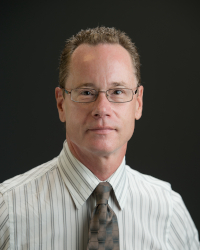
Ronald Hill
Another book may follow. Hill said, “I’d like a new volume on marketing ethics that takes practice and infuses it with values. For example, marketers are good at deciding who they want to sell to, but does it align with all the people who could gain from purchase despite societal prejudices, poverty, and other forms of restriction? We CAN make the world a better place and still thrive as an organization. We just need to consider deeply what that means.”
When asked by email about the scholarship funds an American Marketing Association spokesperson declined to respond on the record. When asked the same question Hill said, “All royalties received from sales of this book go directly to the AMA, and we have no other financial connection with the publisher.”
Hill is a visiting professor of Marketing and holds a Dean’s Excellence Faculty Fellowship at the American University, Kogod School of Business. He is chair, Transformative Consumer Research Committee and recipient of 2019 American Marketing Association Wilkie Marketing for a Better World Award. He has authored over 200 journal articles, books, chapters, and conference papers on impoverished consumer behavior, marketing ethics, corporate social responsibility, human development, and public policy.

Cait Lamberton
According to promotional materials, Lamberton is associate professor and Ben L. Fryrear Chair in Marketing at the University of Pittsburgh’s Katz Graduate School of Business, where she researches and teaches consumer behavior and applied behavioral economics at the MBA and Ph.D. levels, in addition to providing consulting services in government and the private sector.
In 2018, Swartz was a full-time MBA student at George Washington University with a focus on operations, strategy, and brand management. Prior to George Washington, she worked in Corporate Communications at Marsh & McLennan Agency in San Diego, overseeing various aspects of digital media strategy, branding, public relations, and non-profit fundraising efforts.

Click to buy Mapping Out Marketing
Comments:
Filed Under: Books
Posted by Elena del Valle on January 15, 2020

The Victim, a Scottish thriller
Photo, videos: courtesy of KCET
KCET, a Southern California public station, will premiere Austrian, French and Scottish programming this month. The Victim, a four-part Scottish thriller series, Resistance, a French World War II series, and Vienna Blood, an Austrian mystery series will air locally beginning in January. After their on air premier the programs will be available on the station website. Scroll down to watch trailers.
The Victim first aired in the United Kingdom on BBC One April 2019. The engaging and thought provoking thriller explores age old issues of whether the punishment fits the crime as well as the new ethics of individual responsibility for posts on social media. It stars Kelly Macdonald (Boardwalk Empire, No Country for Old Men) as Anna Dean who is accused of leaking her son’s suspected murderer’s identity online and conspiring to have him killed. John Hannah (Four Weddings and a Funeral, Agents of S.H.I.E.L.D.) plays Craig Myers, a hard working family man seeking prove his innocence.
The first episode aired January 7, 2020. Resistance is scheduled to air Tuesday, January 14 at 10 p.m. PT and Vienna Blood should air January 23 at 10 p.m. PT.
Resistance, based on true events, (in French with English subtitles) portrays the story of “a group of young French heroes fighting for freedom from German Nazi occupation in World War II” who join forces to produce a newspaper. According to a press release, the program is part of Walter Presents, a curated collection of award-winning international dramas hand-picked by Walter Iuzzolino, “a TV connoisseur who has scoured the globe for compelling hits.”
In Vienna Blood, reminiscent of Sherlock Holmes with some elements of romance, a student of medicine and Sigmund Freud and an Austrian detective team up to solve murder cases in early 1900s Vienna. It features Matthew Beard (The Imitation Game) and Juergen Maurer (Vorstadtweiber). The final four episodes were my favorites.
According to promotional materials, KCET offers cultural and educational programs in Southern and Central California, including local programming and television programs from around the world. Throughout its 54-year history, KCET has won hundreds of major awards.
Posted by Elena del Valle on January 6, 2020

Gaby Lechin, senior vice president, Global Results Communications
Photo: Global Results Communications
A podcast interview with Gaby Lechin, senior vice president, Global Results Communications, is available in the Podcast Section of Hispanic Marketing and Public Relations, HispanicMPR.com. During the podcast, she discusses public relations trends and predictions with Elena del Valle, host of the HispanicMPR.com podcast.
Gabriela’s communications career spans 18 years and includes extensive and global experience in the tech, cybersecurity, intelligence, transportation, government, and sports industries as well as global affairs, international relations and crisis management. A United States Navy Reserve Officer, Gaby holds a bachelor’s degree in communications and a master’s degree in national security and international relations.
To listen to the interview, scroll down and click on the play button below or locate the “Podcast” section on the right hand side, then choose “HMPR Gaby Lechin” or download the MP3 file to your iPod or MP3 player to listen on the go, in your car or at home from the RSS feed. Some software will not allow flash, which may be necessary for the podcast player. If that is your case, you will need to download the file to play it. To download it, click on the arrow of the recording you wish to copy and save it to disk. The podcast will remain listed in the January 2020 section of the podcast archive.
Posted by Elena del Valle on December 18, 2019

Left to right: Jennifer Lopez, Eddie Murphy with Antonio Banderas and Brad Pitt
Photo, video: PBS SoCal and Variety
For fans of actor interviews PBS SoCal, a donor-supported community institution and part of Public Media Group of Southern California, will air Variety Studio: Actors on Actors, an Emmy Award-winning series co-produced by PBS SoCal in its eleventh season, nationwide beginning January 2, 2020. The distinctive characteristic of the 30 minute programs is actors interviewing actors. The four episodes of the new season will premiere back-to-back on PBS SoCal at 8 p.m. Following their premieres they will be available for streaming on pbssocal.org on the free PBS Video app. Scroll down to see a series trailer.
Episode participants are: Tom Hanks (A Beautiful Day in the Neighborhood) with Renée Zellweger (Judy), Brad Pitt (Once Upon A Time in Hollywood) with Adam Sandler (Uncut Gems) and Awkwafina (The Farewell) with Taron Egerton (Rocketman); Antonio Banderas (Pain and Glory) with Eddie Murphy (Dolemite is My Name), Chris Evans (Knives Out) with Scarlett Johansson (Marriage Story) and Mindy Kaling (Late Night) with Constance Wu (Hustlers); Adam Driver (Marriage Story) with Charlize Theron (Bombshell), Cynthia Erivo (Harriet) with Alfre Woodard (Clemency), Shia LaBeouf (Honey Boy) with Kristen Stewart (Seberg); and Jennifer Lopez (Hustlers) with Robert Pattinson (The Lighthouse), Laura Dern (Marriage Story) with Sterling K. Brown (Waves), and Beanie Feldstein (Booksmart) with Florence Pugh (Little Women).
The series received the 2019 national Daytime Emmy Award. According to promotional materials PBS SoCal is the “flagship PBS station for 19 million diverse people across California formed by the merger of PBS SoCal and KCET.” The station’s programs are accessible for free through four broadcast channels, and available for streaming online, on the PBS mobile apps, and via connected TV services Android TV, Roku, Apple TV and Amazon Fire TV.
Variety’s Actors on Actors issue hit newsstands November 12 and clips appeared on Variety.com. According to promotional materials, “Variety is the seminal voice of the entertainment industry and has been for over 114 years.” It features breaking news reporting, award-season coverage, feature spotlights and analysis of some of the industry’s most prominent players. The Variety Group is owned by Variety Media, LLC, a division of Penske Media Corporation.
Posted by Elena del Valle on November 20, 2019
By Gabriela Lechin
Senior vice president
Global Results Communications

Gabriela Lechin, senior vice president, Global Results Communications
Photo: Global Results Communications
Despite accounting for less than 20 percent of the United States population, Hispanics accounted for 82 percent of the United States labor-force growth participation between the years 2010 and 2017. Gross Domestic Product (GDP) among Hispanics in America grew at a faster rate than the overall United States economy during this time, increasing from $1.7 trillion in 2010 to $2.3 trillion in 2017, according to the 2019 LDC U.S. Latino GDP Report by the California Lutheran University, making it the third-highest growth rate among all global economies during that period on a compounded annual basis. Some of the main influences powering this performance are Hispanics healthy growth in population, their increasing consumer spending and high labor-force participation. According to the report, the financial contribution of the Hispanic community in America will become progressively significant in the upcoming years of the country’s economy.
Click to read the entire Guest Article by Gabriela Lechin: Finding the silver lining in cultural appropriation



















